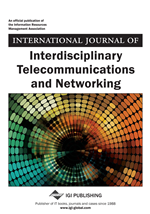
The objective of this paper is the analysis of the state of the art in pedestrian simulation models and the identification of key issues for further research, with particular focus on the modelling of pedestrians and motorised traffic. A review and a comparative assessment of pedestrian simulation models are carried out, including macroscopic models, earlier meso- and miscosimulation models (mostly in Cellular Automata) and more recent Multi-Agent simulation models. The reviewed models cover a broad range of research topics: pedestrian flow and level of service, crowd dynamics and evacuations, route choice etc. However, pedestrian movement in urban areas and the interactions between pedestrians and vehicles have received notably less attention. A number of challenges to be addressed in future research are outlined: first, the need to and account for the hierarchical behavioural model of road users (strategic / tactical / operational behaviour); second, the need for appropriate description and parameterization of vehicle and pedestrian networks and their crossing points; third, the need to exploit in the simulation models the results of statistical and probabilistic models, which offer valuable insight in the determinants of pedestrian behaviour. In each case, recent studies towards addressing these challenges are outlined.
| ID | pj94 |
| DOI | |
| Tags | πεζοί, προσομοιωτής οδήγησης |













